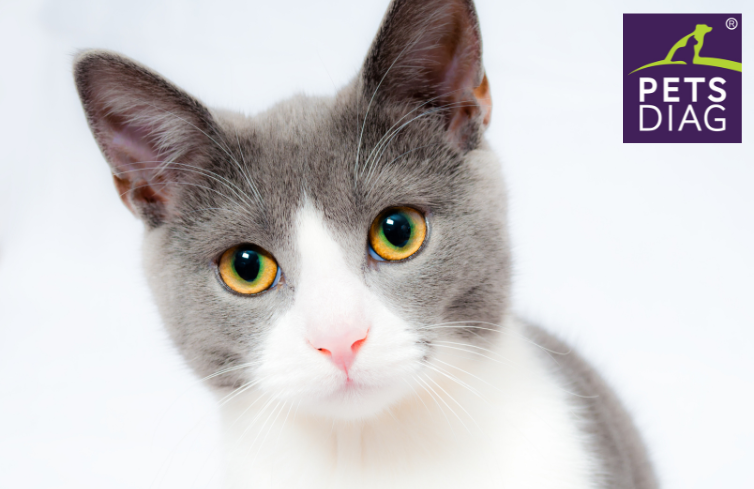Minerals play a number of important roles in the cat’s body. They regulate the work of some organs, e.g. the thyroid gland and adrenal cortex, and also take part in numerous physiological processes, e.g. in the activation of enzymes and oxygen transport. Due to their content in the body, they can be divided into macro- and microelements. The macronutrients include calcium, phosphorus, sodium, potassium and magnesium.
Calcium and phosphorus in cat nutrition
Calcium and phosphorus are among the most important macronutrients. They are part of the bone tissue, and also participate in blood clotting, the transmission of nerve stimuli and energy changes in muscles. They are responsible for the proper growth and development of the organism. A close relationship is observed between these elements, defined as the Ca:P ratio (calcium : phosphorus), which in an adult cat should be 1.2:1. The improper proportion of these two macronutrients leads to the disturbance of calcium-phosphorus metabolism and leads to the development of skeletal disease in the cat. Additionally, excess phosphorus reduces calcium absorption, causing a calcium deficiency in the cat’s body. It is also suspected that too much phosphorus in the diet may increase the risk of chronic kidney disease. As the source of calcium, among others: eggshell meal, calcium citrate or calcium from algae. Phosphorus is abundant in meat and offal.
Sodium and potassium in a cat’s diet
Sodium and potassium are elements responsible, among others, for maintaining the acid-base balance, regulating the osmotic pressure, and also for membrane transport. The excess of these macronutrients in healthy animals is excreted in the urine – if they are provided with an adequate amount of drinking water. Sodium and potassium deficiency is especially bad for young, growing cats. It slows down the cat’s growth, reduces weight gain, accelerates the heart rate, and makes the cat generally weak. Meat is a rich source of these minerals. Potassium can also be found in brewer’s yeast, parsley and bananas.
Magnesium – an essential element for the health of the cat
Magnesium, like calcium and phosphorus, is part of the bone tissue. Moreover, it is an enzyme activator and participates in cellular respiration. It enables muscles to contract and is involved in the conduction of nerve impulses. It plays an important role in the process of contraction and relaxation of the heart, and also affects the work of the muscles of the arteries. An insufficient amount of this element affects the weakening of the contractility of the heart muscle and the development of arrhythmias in the cat. A magnesium deficiency can result in a loss of the cat’s appetite, muscle weakness, seizures, and a reduction in bone mineralization. Meat, eggs and seafood are rich sources of magnesium.
All the described minerals are necessary for the proper functioning of the body. However, it should be remembered that both the deficiency and the excess of macronutrients can be dangerous for our cats. Before starting supplementation, it is worth doing appropriate tests to find out which elements should be supplemented and what doses of preparations will be necessary. Elemental analysis of the hair EHAA along with the consultation of the result is a non-invasive test that will allow you to detect possible abnormalities and choose a diet to suit your pet’s needs.
MSc. Katarzyna Żmuda, specialist in animal nutrition










